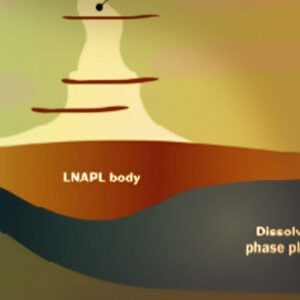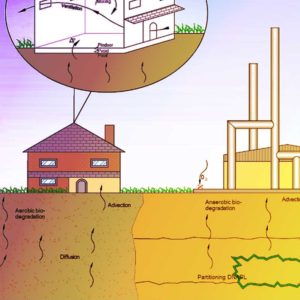Issue Date: July 2023

The aim of this tool and accompanying document is to provide guidance on interpreting how mobile LNAPL plumes are; as part of a lines of evidence approach to characterising LNAPL plume behaviour.
The tool provides commentary and an easily accessible set of spreadsheets containing the equations provided in the CL:AIRE 2014 publication An Illustrated Handbook of LNAPL Transport and Fate in the Subsurface.
The included equations estimate:
- the depth of LNAPL penetration below the water table;
- the critical thickness of LNAPL in a borehole which will indicate lateral migration;
- Darcy flux;
- LNAPL hydraulic conductivity; and,
- lateral LNAPL velocity.
The document discusses which parameters the mobility equations are most sensitive to, sources of uncertainty; and provides guidance on where to obtain suitable values for use in the equations. In addition, for selected LNAPL and sediment types, we provide example input data and graphical output to estimate the depth of LNAPL penetration below the water table; and the critical thickness of LNAPL in a borehole.
28 July 2023: Version 1.1 of this document has been published.
Corrigendum: Changes are listed on the Revisions page of the main document for Box 3, Box 5 and Appendix 2 in the main document, and Appendix 3 (capillary height spreadsheet). Capillary height calculations made using Version 1 of Appendix 3 will be correct, however, please note that capillary height calculations made using the equation in Box 5 of Version 1.0 independently of the spreadsheet tool will be incorrect by a factor of 100.
Download NAPL Mobility Screening Tool document
Appendix 1 – Spreadsheet tool
Appendix 3 – Capillary height spreadsheet


